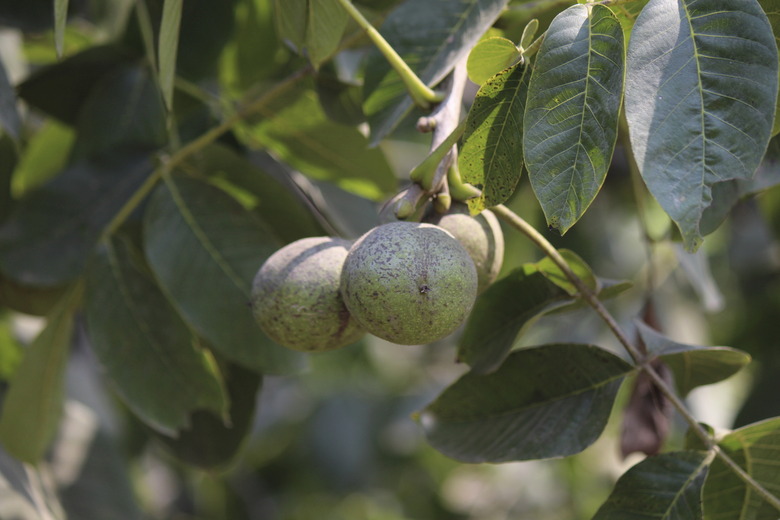Butternut Tree Facts
Once grown for its gold-tinged wood and its sweet and buttery nuts, butternut (Juglans cinerea) has become a rarity in yards and in nature. The culprits: over-harvesting and a nasty fungus that leaves no variety — not even hybrids — untouched. But if you can find a healthy seedling to plant in an area free of the fungus, the native butternut can grow into a stately and attractive tree 40 to 60 feet tall.
Step 1
The most cold hardy of all walnut varieties, butternut grows in U.S. Department of Agriculture plant hardiness zones 3 through 7. Like its cousin the black walnut (Juglans nigra), which grows in USDA zones 4 through 9, it prefers moist and rich, but well-draining soils such as you would find in stream valleys, coves and lowland forests. Butternut would also rather have full sun than shade and does not tolerate competition well, so you will not find it growing in dense forests unless it finds an opening somewhere. Provide it with its preferred habitat and it requires little care. In dry areas, or during times of drought, water the tree for the first two years of growth to help it establish itself.
Step 2
Things to Consider
Step 1
If you're looking for an easy, care-free tree to plant in your yard, look elsewhere. Butternut does not play well with others, emitting a chemical called juglone from its roots to stop the growth of plants around it. Despite this and other problems, butternut, when planted in the right environment, has the potential to grow into a majestic shade tree with an open, rounded crown. As an added bonus, if you're willing to wait 20 years, it also produces tasty nuts.
Step 2
- The most cold hardy of all walnut varieties, butternut grows in U.S. Department of Agriculture plant hardiness zones 3 through 7.
- Butternut would also rather have full sun than shade and does not tolerate competition well, so you will not find it growing in dense forests unless it finds an opening somewhere.
Propagation and Planting
Step 1
Although it's difficult to propagate a butternut tree with grafting or cuttings, the seeds will grow after chilling for three to four months at temperatures between 34 and 40 degrees Fahrenheit. When planting a butternut seedling or seed, take your time to find the perfect location for it. After it starts growing, it develops a deep taproot and does not respond well to being transplanted. Make sure it receives full sun and that little else grows — or will grow — nearby. The less competition it has, the more likely it is to grow strong and healthy. Plant multiple trees 25 to 30 feet apart to give them space to grow.
Potential Problems
Step 1
The fungus that attacks butternut (Sirococcus clavigignenti-juglandacearum) begins by invading small openings in the bark and girdling stems at the top of the canopy, and eventually spreads down the tree, killing it completely. Once infected, there is no cure. The fungus appears as bark cankers with black centers surrounded by white and can survive on dead trees up to two years or longer. Other butternut problems include leaf spot, bacterial blight, and insects such as borers and caterpillars. These problems combine to give the tree a reputation for a short life span of approximately 75 years, but healthy trees can live much longer.
Step 2
- Although it's difficult to propagate a butternut tree with grafting or cuttings, the seeds will grow after chilling for three to four months at temperatures between 34 and 40 degrees Fahrenheit.
References
- Cornell Department of Agriculture: Butternut
- Missouri Botanical Garden: Juglans Cinerea
- Iowa State University Forestry Extension: Butternut
- University of New Hampshire Cooperative Extension: Big Tree of the Month — Butternut (Juglans Cinerea)
- U.S. Forest Service: How to Identify Butternut Canker and Manage Butternut Trees
- Ohio Department of Natural Resources: Butternut (Juglans Cinerea)
- Arbor Day Foundation: Walnut, Black
